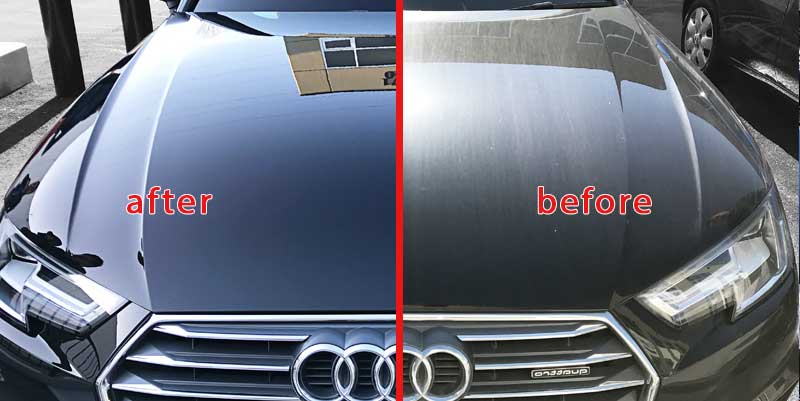Why Pick Ceramic Coatings San Jose for Long-Lasting Sparkle
Revealing the Science Behind Ceramic Coatings: Just How Does It Job and Why Is It Superior to Conventional Alternatives?
Ceramic finishings have been gaining appeal in different industries for their extraordinary performance and durability. Recognizing exactly how ceramic finishings work and why they outperform standard options is important for those seeking to boost the durability and resilience of their materials.
The Chemistry of Ceramic Coatings
In understanding ceramic layers, diving into the detailed chemistry behind their structure is important for grasping their capability and sturdiness. Ceramic coatings are mostly composed of silicon dioxide (SiO2), which creates a solid and safety layer when related to numerous surfaces. This chemical framework provides phenomenal resistance to warm, chemicals, and deterioration, making ceramic finishings highly searched for for a vast array of applications.
The chemistry behind ceramic coatings includes the development of covalent bonds between silicon and oxygen atoms, producing a rigid network that improves the layer's strength and toughness. Furthermore, the visibility of various other elements such as titanium, zirconium, and light weight aluminum additional boosts the layer's properties, providing raised hardness and bond to surfaces.
Comprehending the chemical structure of ceramic finishes permits for the customization of solutions to fit details needs, whether it be for vehicle, commercial, or residential purposes. By utilizing the power of chemistry, ceramic finishes remain to lead the way for premium defense and efficiency in numerous sectors.
Advantages of Ceramic Coatings

An additional considerable benefit of ceramic coverings is their hydrophobic nature. This property triggers water to bead up and roll off the covered surface, bring dust and pollutants with it. Because of this, ceramic finishes make cleaning and preserving surface areas a lot easier and less taxing. Ceramic coverings use enhanced color and gloss depth, offering surfaces a vivid and glossy appearance. On the whole, the wide range of benefits supplied by ceramic finishings make them a premium choice compared to typical finish techniques.
Exactly How Ceramic Coatings Bond
Ceramic layers bond to surface areas via a process that includes molecular adhesion and chemical interactions. When a ceramic coating is used to a surface area, it develops a strong bond by chemically adhering to the surface area at a molecular level.
Moreover, the chemical communications between the ceramic finishing and the surface better boost the bond. ceramic coatings san jose. These interactions allow the ceramic layer to produce a seamless and continuous layer on the surface, giving exceptional protection and resilience. Unlike typical finishes that may rest on the surface without fully bonding, ceramic layers produce a permanent bond that is immune to chemicals, UV rays, and severe ecological conditions

Fundamentally, the bonding mechanism of ceramic coatings makes certain a efficient and lasting protective layer that outperforms standard covering alternatives. This remarkable bond contributes to the toughness, scratch resistance, and long life of ceramic finishings, making them a recommended option for numerous applications.
Sturdiness of Ceramic Coatings
The extraordinary longevity of ceramic finishes stems from their durable molecular adhesion and chemical communications with surfaces, making sure a durable safety layer that exceeds standard coating options. As soon as applied, ceramic finishings form a solid bond with the substrate, creating a resilient barrier against various ecological stress factors such as UV radiation, chemicals, and abrasions. This bond is so protected that it can stand up to the roughness of daily usage without deteriorating or deteriorating rapidly.
Unlike conventional coverings that may degrade over time, ceramic coatings keep their stability for a prolonged period, providing durable security for the underlying surface. Overall, the extraordinary sturdiness of ceramic coatings makes visit their website them a superior option for securing a wide range of surface areas in numerous applications.
Ceramic Coatings Vs. Typical Alternatives
In comparison to conventional finish approaches, ceramic layers offer an unique blend of sturdiness and protective capabilities that set them apart in different surface area protection applications. Conventional options such as wax or sealants provide a short-term layer of protection that can subside promptly, requiring regular reapplication. On the other hand, ceramic finishings create a solid bond with the surface, developing a semi-permanent or irreversible obstacle that is extremely resistant to abrasion, chemicals, UV rays, and severe temperature levels.
Additionally, ceramic finishes provide exceptional hydrophobic residential or commercial properties contrasted to standard finishings. The hydrophobic nature of ceramic coverings triggers water to bead up and roll off the surface area, carrying dirt and contaminants with it. This self-cleaning effect helps to maintain the surface area's tidiness and gloss for extended durations, lowering see post the need for regular upkeep.
In addition, ceramic layers have a thicker layer compared to traditional alternatives, offering improved scratch resistance and defense against small impacts. This resilience makes certain long-lasting performance and assists preserve the visual allure of the dealt with surface for an extended period.
Conclusion
In verdict, the scientific research behind ceramic coatings hinges on their chemical structure and bonding properties, making them above typical options. The benefits of ceramic finishes include boosted longevity and defense for surfaces. By understanding just how ceramic coverings job and their benefits over typical options, one can make informed choices when considering finishing alternatives for numerous applications.
Unlike traditional coatings that may rest on the surface without completely bonding, ceramic layers create a permanent bond that is resistant to chemicals, UV rays, and severe ecological problems.
The exceptional durability of ceramic coverings stems from their robust molecular attachment and chemical interactions with surface areas, guaranteeing a durable safety layer that exceeds conventional coating alternatives.Unlike traditional layers that may break down over time, ceramic coverings maintain their honesty for a prolonged duration, giving long-lasting security for the underlying surface area.In comparison to conventional coating techniques, ceramic layers supply a distinct mix of longevity and navigate to this website safety abilities that set them apart in numerous surface area protection applications. By recognizing exactly how ceramic finishes work and their benefits over typical alternatives, one can make informed decisions when considering finishing choices for various applications.